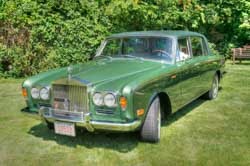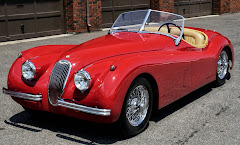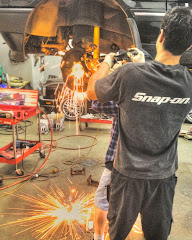Last fall I wrote a post on trailering collector cars. We do a lot of hauling and many of our
vehicles are big, heavy vintage Bentleys.
We’ve seen the ongoing discussion on how to secure the cars and we wish
to weigh in with a fresh opinion.
When hauling over rough roads – like I-95 in New England
winter – or when hauling into cities like New York or Boston – there is a risk
of the car moving and banging the wheel boxes of the trailer if not well
secured.
We hauled this vintage Continental to a Bentley event in
Manhattan using crossed tie down straps and found the car moved almost a foot
side to side because the roads were so rough.
The photo shows the car in the trailer as we consider using straight or
crossed straps, but either arrangement allows the car to move up and down
freely on the suspension and that is the problem.
No matter how tight you cinch the straps the car still
moves. When it moves down the straps
loosen and when it goes up they bang and stretch and loosen a bit and before
you know it the back can move over bumps.
You think crossed straps prevent that but the angles involved are not
sharp enough and they don’t.
There is one positive way to prevent it and we are now doing
that on all Bentley and other big cars we move.
That is to lash the wheels to e-track strips on the floor. The photos below show a typical e-track
installation, where there are several strips to accommodate varying track
widths.
The e-track system we use relies on straps that pass over
the tires and run to ratchets in front and behind the vehicle for ease of
setting. The tires are wedged in front with
wheel chocks so the car is initially tied down as far forward as it can
go. Then the e-track straps are passed
over each of the four wheels and clamped tight.
Now the car can move freely up and down and nothing
happens. No loose straps, no movement. You don’t have to worry about rough roads or
hard stops.
I used to be afraid that e-track was “light duty” but the
straps are rated for 4,000 pounds and with 4 of them on a 5,000 pound car you have a
large margin of safety. The e-track
strips we use are bolted through the trailer frame with nuts, bolts, and
washers. Many trailer places install
e-track with self tapping screws and we think that can be dangerous with heavy
cars.
It’s the best thing we have seen to date, easy to use, and
long lasting.
John Robison
(c) 2017 John Elder Robison
John Elder Robison is the general manager of J E Robison Service Company, celebrating 30 years of independent restoration and repair of Crewe-built motorcars in Springfield, Massachusetts. John is a longtime technical consultant to the national Bentley and Rolls-Royce car club (rroc.org), and he’s owned and restored many fine British motorcars. Find him online at www.robisonservice.com or in the real world at 413-785-1665
Reading this article will make you smarter, especially when it comes to car stuff. So it's good for you. But don't take that too far - printing and eating it will probably make you sick.

































No comments:
Post a Comment